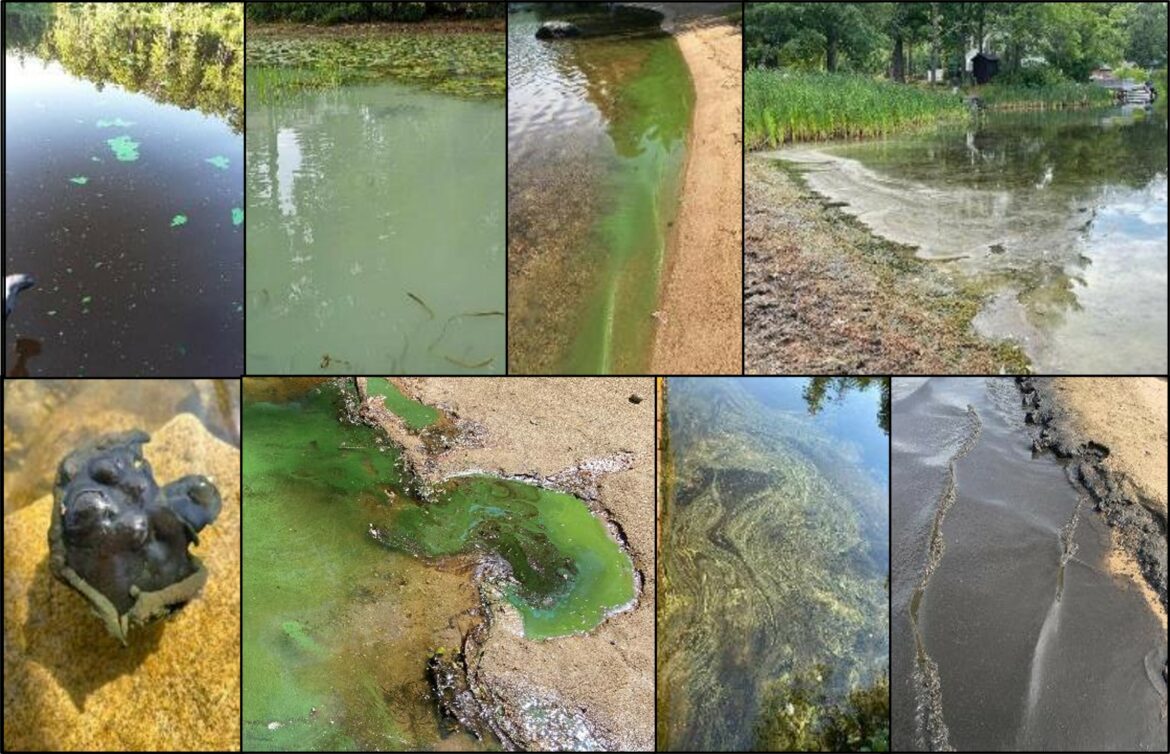By PAULA TRACY, InDepthNH.org
CONCORD – Recent storms may have churned up some unwanted water problems on the state’s water bodies this week with 15 posted for either cyanobacteria or fecal bacteria as of Friday afternoon.
Lakes experiencing cyanobacteria blooms are still usable for boating or other activities. Individuals interested in swimming or wading should learn what a cyanobacteria bloom looks like and avoid areas with a green surface and water that is not clear, the state Department of Environmental Services advises.
The state said the best practice is to avoid water in the vicinity of a bloom for you and your pets and report it to NHDES immediately.
The state Department of Environmental Services map is here: https://www.des.nh.gov/water/healthy-swimming/healthy-swimming-mapper and click on check the map. It’s best to check daily as the listings frequently change as some water bodies come off the list and some new ones added.
Warnings are issued lake-wide when cyanobacteria cell counts exceed the recreational health threshold of 70,000 cells/mL. Surface blooms can rapidly change and accumulate in various locations around a waterbody. Please continue to monitor shorelines for changing conditions. NHDES advises lake users to avoid contact with the water in the vicinity of blooms. Pets and livestock should also be kept out of the water.
When a warning is issued, resampling is performed weekly until the bloom subsides. Warnings are issued from May 15 through October 15. Warnings are intended as a precautionary measure for short term exposure to cyanotoxins. Because bloom conditions can rapidly change and move around in a waterbody, it is important to perform your own self-risk assessment by checking the healthy swimming map and looking at the water for discoloration or any unusual growth, such as clouds, ribbons, or flecks in the water, prior to recreating. If you see cyanobacteria develop after a warning has been closed, please report it to DES.
Cyanobacteria are natural components of water bodies worldwide, though blooms and surface scums may form when excess nutrients are available to the water. When a cyanobacteria bloom occurs, the potential increases that exposure to the bloom may cause acute and chronic health effects. Health effects include irritation of the skin and mucous membranes, tingling, numbness, nausea, vomiting, seizures, and diarrhea.





